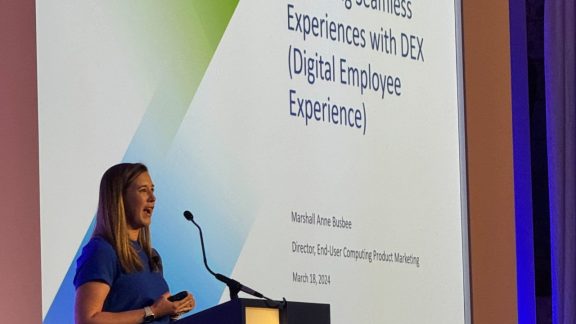The coming of summer makes me think of that big truism “the only constant is change,” and its counterpart, “it’s how you handle change that matters.” When it comes to IT infrastructure, the ability to effectively manage unforeseen business shifts, seasonal peaks and valleys, and ad-hoc temporary use cases is critical.
How rapidly can you adjust? And how much will it cost you, both in financial and human resources?
Businesses of all types struggle with this. One of the more obvious examples is in retail, where influxes of seasonal workers need to be armed with secure a corporate desktop to handle holiday gift-buying crunches.
Education is another vertical that has regular capacity spikes. In their case it’s during mid-terms and finals, when they need a slew of additional desktops for online testing applications. To make sure they can handle these ebbs and flows, IT organizations often purchase, build out and maintain extra infrastructure, which sits unused much of the year.
And it’s not just in verticals. For instance, every business with dev/test capabilities needs to spin up servers and desktops when evaluating technologies and simulating how apps will run in various environments, and then just as easily spin them down. And, as anyone in IT who has been part of an M&A knows, it’s not uncommon to have to quickly turn around temporary workspaces for hundreds or thousands of new employees, while the acquired company’s infrastructure is evaluated for security and compliance before being integrated with the acquirer’s environment.
One of the best ways to handle temporary use cases like these is with virtual desktops, which enable great flexibility and security and, when part of a virtual desktop infrastructure (VDI), the benefits of centralized management. However, on-premises VDI has drawbacks when the desktops aren’t used continually or needed for the full calendar year. The large up-front capital investment required for VDI doesn’t pay off for short-duration uses. Neither does the time, training and staff required to set up and maintain VDI environments.
Instead, many VMware customers have found DaaS, or cloud-hosted desktops-as-a-service, to be ideal for temporary use cases. DaaS moves virtual desktops and apps into the cloud, where an experienced service provider handles the servers, software and support. DaaS gives you all the benefits of VDI on a temporary basis, without any of its large infrastructure cost and time requirements. You just subscribe to cloud-hosted virtual desktops and apps on a monthly basis and, when they’re no longer needed, stop paying for them.
For instance, one of our customers, a global oil and gas conglomerate, divested several of its businesses and, overnight, had to take the divested units’ workforce off the corporate network for security reasons. However, it still had to provide the computing resources workers needed to be productive. The IT group quickly designed a new workspace environment, using VMware Horizon Air, and quickly made it available to more than a thousand workers. These people were able to use the fully functional, cloud-hosted Windows desktops right away and throughout the transition.
Change is inevitable. But, from an IT perspective at least, it doesn’t have to be expensive, cumbersome or painful.
Check out some additional ways Horizon Air makes it easy to support your next use case by taking a look at the Top 5 Use Cases for Desktop-as-a-Service here.






